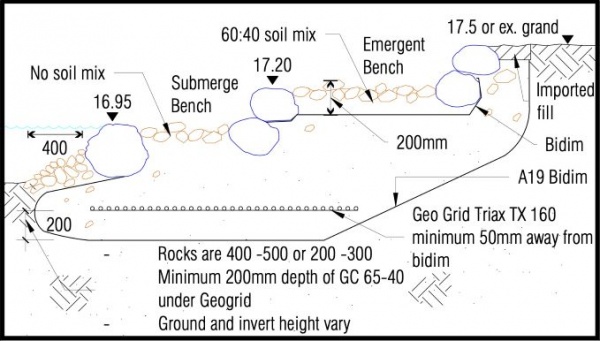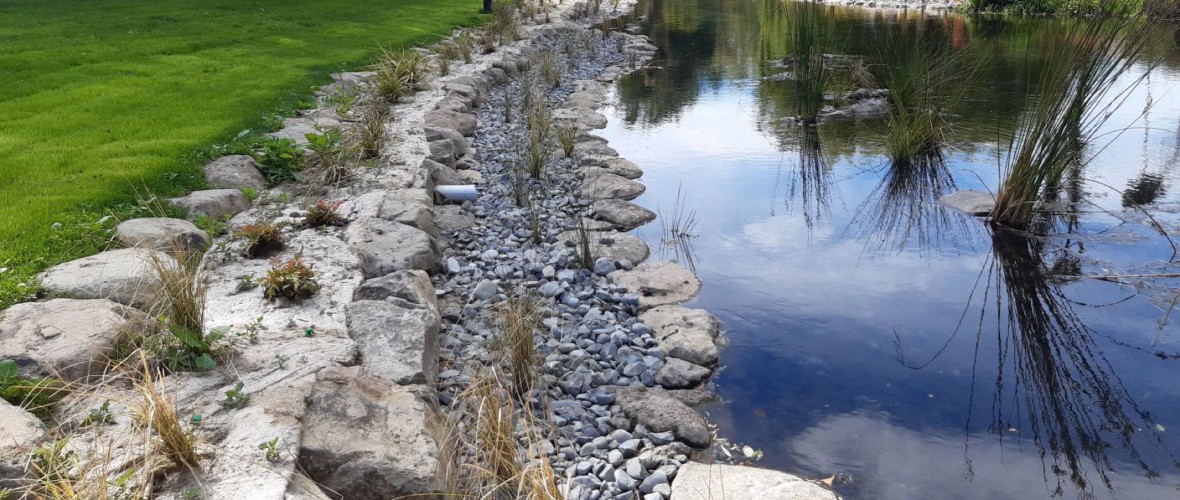A Citycare Property Landscapes team comprising David Giddens, Brian Campbell and Viveni Tifaga — with assistance from graduate engineer John Darwin — has recently completed a stream bank remediation project for Christchurch City Council along a stretch of the Waimairi Stream in Fendalton, near to the historic Daresbury House.
Future-proofing the environment
The project involved the removal of the existing, timber lining — which was aged and in disrepair — for replacement with banks of rocks and complementary native planting, designed to increase the flood capacity of this part of the stream, as well as the existing banks’ erosion protection.
Given the sensitive and historical location of the project site, the aesthetics of the job held some importance to the overall success of the project.
Of primary concern, was working with the unstable river silt and ensuring correct environmental controls were deployed, says Citycare Property project manager Aaron Martin.
“When saturated, silt acts like a liquid making it difficult to excavate without the dig slumping in on itself. To help prevent this, hydro barriers were installed — these are a series of metal walls with a tarp lining, which are placed around the site allowing the water within to be pumped out to create a dry site.
The hydro barriers were fundamental to the job’s success from an environmental side as well as a practical side, preventing major slumping of the silt and providing visibility for excavation and placement.
Delivering 'outside the box' solutions
“Further complicating the project was the fact that the loose material continued well below a metre deep, compounding fears that the originally proposed design would not last, as the gravels would sink into the silt resulting in localised settlement,” explains Aaron. The project also ran through winter from July to October — the wettest months of the year.
Discussions between Citycare Property and Council Designers around future proofing the design resulted in a solution that incorporated a geogrid raft element, which provided much needed stability and tensile strength to the stream bed in the project areas.

This cross-section diagram shows the reworked design incorporating the geogrid raft element, which provided much needed stability and tensile strength to the stream bed
“Full credit to the team and to Davey, especially, who is making a name for himself as a dependable foreman with a high standard of work and a focus on open communication,” says Aaron. “My thanks too to John Darwin, who looked after the day-to-day requirements for the team. The finished result is a testament to the hard work of all involved and is, aesthetically, much more naturalistic and pleasing to see. I know all parties couldn’t be happier with the outcome.”
